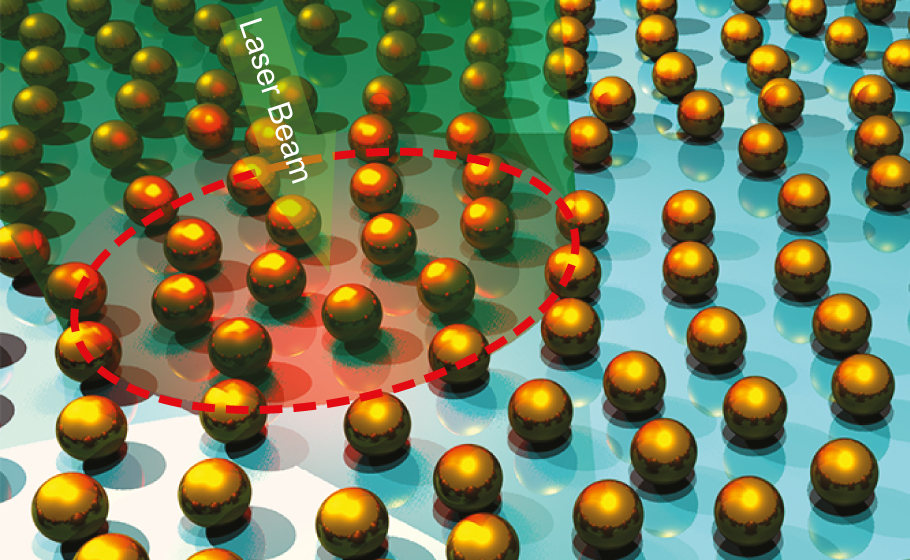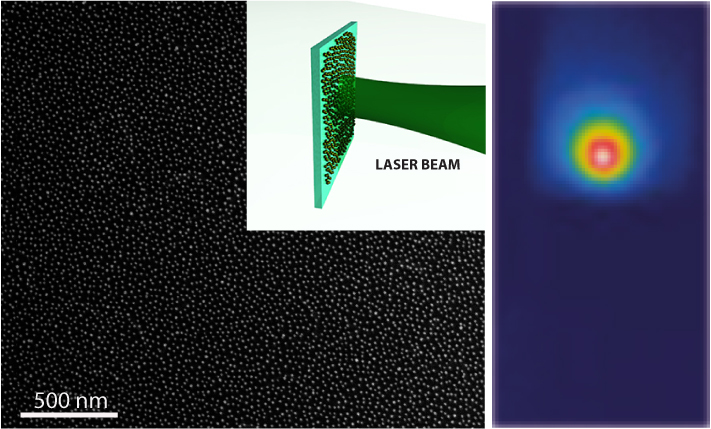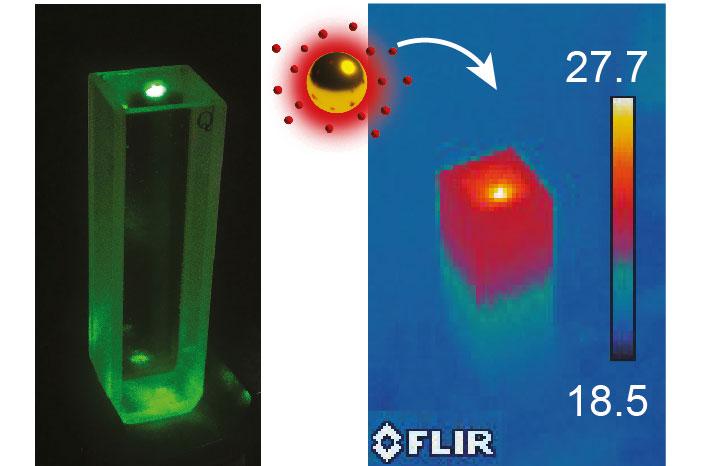Thermo-Plasmonics

Photo-thermal study of layers of gold nanoparticles
Experimental characterization and theoretical modeling of the macroscopic plasmonic heat production that takes place in a single layer of small gold nanoparticles (GNPs), uniformly distributed on a glass substrate, covered with different host media and acted on by a resonant radiation. Due to the macroscopic dimension of the spot size, the used laser irradiates a huge number of nanoparticles, inducing a broad thermo-plasmonic effect that modifies the thermal conductivity of the entire system. A theoretical approach has been extended to the macroscale, including an analysis of the effects predicted for different NP densities and laser spot size values, as well as for different values of the laser intensity. Theoretically predicted temperature variations are in excellent agreement with experimental results.

Thermoplasmonic Effects in Gain-Assisted Nanoparticle Solutions

Plasmon-mediated cancer phototherapy
A nanoplatform for simultaneous cellular imaging, photodynamic and photo-thermal therapies has been designed and realized by embedding a purposely synthesized highly luminescent water soluble iridium(III) compound into gold core–silica shell nanoparticles. These multifunctionalities arise mainly from the photo-physical properties of the cyclometalated complex: (i) the heavy atom promotes, through excited triplet state formation, energy transfer processes towards molecular oxygen, with the generation of 1O2 (photodynamic effect); (ii) the overlap of the iridium(III) complex emission band with the plasmonic resonance of gold nanostructures allows excitation energy transfer towards the metallic core (photo-thermal effect); (iii) the remarkable iridium(III) complex luminescence feature, which is preserved despite energy transfer processes, makes the whole system an efficient luminescent bio-probe (imaging).

